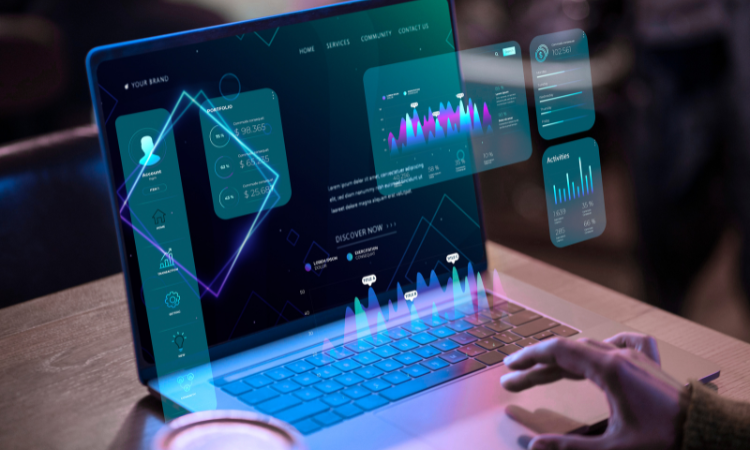Your NPS just nudged from 35 to 38. Congrats—except the ‘why’ behind that lift is already mutating.
When our own NPS climbed from 62 to 65 last year, it looked good on the slide. But that same week, a recurring phrase began to show up in support tickets: “hard to find.” Within days, that evolved into “can’t find”—the kind of signal that doesn’t show up in your dashboards until it's already costing you conversions. We fixed the issue—an overlooked step in our onboarding flow—before it hit churn. That moment reshaped how we view metrics at Zonka Feedback.
Because the truth is: Scores lag. Themes lead.
The most effective CX teams we’ve seen aren’t waiting for the churn curve. They use thematic analysis as their early warning radar. They’re spotting friction trends, decoding customer language, and re-prioritizing experience design in real time. This isn’t about replacing CSAT or NPS. It’s about transcending their limitations.
Eliminate Guesswork with AI-Driven Thematic Analysis📈
Prioritize what matters and drive action in real-time. Turn qualitative feedback into measurable insights using Zonka Feedback's AI-powered Thematic Analysis.

Why CX Teams Still Overlook Thematic Analysis?
For a capability that can surface your riskiest friction points and clearest growth levers, thematic analysis remains remarkably underutilized.
Why? Not because it lacks value. But because of three persistent myths that still shape how most CX teams approach feedback. As an industry, we’ve mistaken tags for themes, metrics for meaning, and manual effort as an immovable barrier. It’s time to unlearn those defaults.
Myth #1: “We’re already doing it with tags.”
Tagging ≠ thematic analysis. Tags are nouns; themes are stories.
We’ve seen this confusion firsthand in many early-stage CX setups. A static tag might tell you that “delivery” was mentioned. But it won’t tell you how it made the customer feel, what triggered the frustration, or whether similar complaints are gaining momentum.
Most customer experience tools rely on rigid taxonomies or manual labels that can’t evolve with customer language. And they miss what matters most: trajectory.
Over 70% of VoC programs still operate with fixed tags that don’t adapt to emerging sentiment patterns. Which means most dashboards are anchored in yesterday’s vocabulary while customer expectations move on.
Myth #2: “Scores tell us what we need to know.”
Scores tell you what happened. They rarely tell you why.
Metrics like Net Promoter Score, CSAT, and CES are helpful—but they’re summary signals. Without context, they’re easy to misinterpret.
In one churn analysis across our platform, we found that 78% of churn events were preceded by a thematic pattern that didn’t materially affect NPS until weeks later. The red flags were in the comments—not the number.
In fact, Forrester reports have conveyed very clearly that only 1 in 5 companies say they fully understand the emotional drivers behind their CX metrics. That means most teams are optimizing with partial vision—and correcting only after complaints or churn become visible.
Myth #3: “Thematic analysis is too manual, too slow.”
That might’ve been true five years ago. But the tooling has evolved.
Today, AI-native platforms, like ours, can cluster millions of verbatims across channels and languages in real-time, detect emergent sentiment, and even quantify impact by revenue, churn risk, or support cost.
At Zonka Feedback, our clients now go from unstructured text to business-ready insights in hours—not weeks. We’ve seen feedback cycle time drop by over 80% when teams adopt LLM-powered analysis over traditional tagging or manual coding.
The limitation is no longer technology. It’s inertia.
The Visibility Gap: What Simple Scores Miss Out On
For all the progress we’ve made as CX leaders in tracking sentiment—NPS, CSAT, CES—these metrics still offer a rearview mirror, not a real-time compass. They’re easy to report, universally recognized, and often... deceptively reassuring.
But here’s the uncomfortable truth: scores are blind to momentum. They don’t tell us who’s shifting, why it’s happening, or what’s next. And that gap—between what’s reported and what’s really unfolding—is where most CX failures begin.
Over the years, we’ve seen this play out across industries. And we’ve felt it ourselves at Zonka Feedback—often catching the first signs of friction in open-text weeks before a score dips. Here’s what we now know to be true:
1. Most Customers Don’t Leave Scores. They Leave Clues.
Only 19% of customers with a negative experience complete satisfaction surveys. The rest? They speak up in their own way—in app store reviews, support tickets, or exit interviews. But because most of that feedback is open-ended, it's often left unread or buried under legacy tags.
When we analyzed over a billion data points last year, we found that high-intensity themes often emerged before they were ever reflected in a score. The most telling signals—the root cause of churn, discontent, or brand erosion—were hiding in plain text.
2. A Single Score is Static. Themes Track Momentum.
Think of an NPS score as a snapshot. Thematic analysis is a time-lapse.
A single customer giving a “7” tells you they’re passive. But if five different customers—all rating you 7 or 8—mention “confusing checkout” in open-text within 48 hours, that’s not a coincidence. That’s a directional spike in friction. And it demands a design fix before it becomes a business problem.
Themes give you velocity. Scores just give you a score.
💡Theme velocity is the pressure gauge CX teams have been missing. It doesn’t just tell you what’s broken—it tells you how fast it’s breaking.
3. Scores Flatten Emotion. Themes Surface Intent.
We’ve seen support comments like: “Your rep was fine—just robotic. Felt like I was talking to a script.”
That same customer rated their interaction 8/10.
The CSAT said “success.” The verbatim said “burnout.” That difference matters, especially when you’re trying to understand brand fatigue, empathy gaps, or early warning signs of churn. Themes decode tone, nuance, and intent. They reveal what numbers can’t: what’s beneath the surface.
So, what’s at stake without it?
- You chase the wrong priorities
- You overlook small issues until they become costly
- You lose the chance to proactively design better experiences
In short, scores keep you comfortable. Themes keep you competitive.
From Hidden Themes to Operational Wins: What Leading CX Teams Are Doing Differently
In every high-performing CX program I’ve observed—whether it’s an airline, a digital bank, or a retail chain—there’s a common thread: they treat themes not as insights, but as signals for action.
They don’t wait for NPS to drop. They track the shifts in language, emotion, and volume that show up weeks before scores do. They build feedback into operations, not just reporting. And most importantly, they close loops faster—because they can see where the friction is actually coming from.
Let’s walk through how thematic analysis is being applied—not in theory, but in-flight, on-site, and inside the customer’s decision window.
a. Airlines: Spotting Invisible Experience Gaps
In aviation, feedback typically clusters around logistics—delays, baggage, crew. But in one of the fastest-growing low-cost carriers, our thematic engine detected a pattern that the CX team hadn’t quantified: rising mentions of “seat layout discomfort” and “unclear boarding signage.”
These weren’t dramatic complaints. But the volume and tone were shifting fast.
By correlating those themes with routes and gate designs, the airline redesigned signage at five major airports—resulting in a 14% drop in complaints and faster onboarding. None of this would’ve surfaced in NPS.
b. Retail: Turning Friction Themes into Floor Plans
A global retail chain noticed a recurring phrase in open-text surveys: “couldn’t find what I needed.” When we ran thematic clustering on location-specific responses, it turned out those comments clustered around newer stores—specifically, those trialing a new aisle layout.
The insight didn’t just help CX. It changed how the business approached store design.
Within two months, they reverted the test layouts in select regions and saw a 7% lift in in-store conversion—without spending a dollar on new campaigns.
c. Financial Services: Surfacing Trust Breakers Early
In financial services, trust erodes quietly. We worked with a digital bank that saw consistent NPS above 50—but customer growth was stalling.
When we ran a churn-side theme analysis, one pattern emerged across exit feedback: subtle language around “hidden charges” and “unclear loan terms.” Individually, these weren’t flagged as complaints. But collectively, they mapped to accounts that left within 60 days of onboarding.
That insight led to a simple fix: rewriting three transactional emails. Three months later, early-stage churn dropped by 11%.
When Teams Don’t Act on Themes
We’ve also seen the opposite. One SaaS company ran weekly CSAT surveys and proudly tracked an average of 8.6. But in the open-text, users repeatedly used phrases like “too many nudges,” “inbox spam,” and “annoying popups.” These comments were tagged, but deprioritized. A quarter later, they saw a 12% spike in unsubscribes.
By then, it was too late. The data had been there. The story was already told.
💡The difference isn’t whether you collect feedback. It’s whether you can hear what’s changing—before the score catches up.
Thematic analysis isn’t about building better dashboards. It’s about building faster response loops. It’s how leading CX teams are turning unstructured noise into operational precision—across journeys, departments, and time zones.
From Themes to Revenue: Linking Insights to ROI
Let’s call it what it is: insights that don’t move a KPI are the first to be cut when budget season hits.
As CX leaders, we’re often asked the same question in every boardroom:
“What’s the business impact?”
It’s a fair ask—and one we should be ready to answer. Because the truth is, themes are not soft signals. They’re hard metrics in disguise.
We’ve seen it repeatedly: behind every costly escalation, stalled onboarding flow, or silent churn curve lies a pattern—a recurring theme that was visible, quantifiable, and actionable, long before it hit the P&L.
Themes Are Financial Levers, Not Just Feedback Patterns
Whether you’re tracking NPS, churn, AHT, CAC, or repeat purchase, every high-volume theme is a proxy—either for friction or for momentum.
And when you pair themes with business context, they become decisions—not just discoveries.
We’ve seen clients shift budget mid-quarter, rewire onboarding flows, and launch proactive retention plays based on nothing more than high-velocity themes that hadn’t yet touched the score.
Let’s make it tangible:
| Theme | Metric Impact |
| “Long wait times” | ↑ AHT, ↑ Cost to Serve, ↓ CSAT |
| “Confusing checkout” | ↑ Cart Abandonment, ↓ Conversion |
| “Unexpected fees” | ↓ Retention, ↑ Escalations |
| “Helpful onboarding” | ↑ Trial-to-Paid Conversion, ↑ Referrals |
This isn’t just pattern recognition—it’s emotion-to-outcome mapping.
The Formula: Turn Narrative into Numbers
Here’s the framework we use internally to estimate business impact:
Theme Volume × Sentiment Weight × Customer Value = Financial ROI
Let’s break it down:
- Theme Volume: Number of verbatims containing the theme
- Sentiment Weight: Emotional score from –1 (negative) to +1 (positive), based on NLP or survey-coded sentiment
- Customer Value: Dollar value per customer, transaction, or account
For example:
- Theme: “Slow checkout”
- Volume: 2,000 mentions this quarter
- Sentiment Weight: –0.6 (moderately negative)
- Customer Value: $40 per transaction
Therefore, 2,000 × (–0.6) × $40 = –$48,000 in risked revenue
Don’t Just Report It, Reallocate Around It
When themes stay trapped in dashboards, they’re nice-to-know. When tied to metrics, they drive decisions.
One enterprise retailer we worked with reallocated training funds in two weeks—just by quantifying the cost of the recurring theme “unhelpful staff.” The math told the story.
The same holds true on the upside.
A digital brand noticed a spike in “instant checkout” praise:
- 1,200 mentions
- Sentiment: +0.4
- Value per customer: $40
→ 1,200 × 0.4 × $40 = +$19,200 in incremental value—from a single UX tweak.
💡 Themes aren’t just qualitative insights. They’re performance drivers—if you know how to price them.
How AI Took Thematic Analysis from Backlog Item to CX Essential?
For years, thematic analysis sat in the backlog—powerful in theory, too slow in practice. We knew the insights were rich. But between manual tagging, spreadsheet stitching, and the need for analyst review, most CX teams simply didn’t have the bandwidth. That changed—fast.
In late 2023, after testing multiple models internally, we deployed our first LLM-powered thematic engine on a live telecom client. The difference was instant. What once took two weeks of human coding surfaced in 58 minutes. And not just themes, but sentiment shades, urgency signals, and root causes—across four languages.
That was our turning point. Not a dashboard update. A capability shift.
Today, AI-native feedback platforms don’t just make analysis faster. They turn it into a continuous, decision-ready signal stream.
According to the 2025 CX Analytics Trendline, AI-powered feedback programs have reduced time-to-insight by over 80% and more than doubled the number of action-worthy findings per quarter.
| Capability | Yesterday | AI-Powered Today |
| Processing Speed | Weeks of keyword tagging | Minutes with LLM clustering |
| Multilingual Reach | Separate teams per language | 100+ languages out-of-the-box |
| Insight Depth | Word clouds & guesswork | Impact scores & root-cause patterns |
| Feedback Volume Handling | Capped at a few thousand responses | Millions of comments across channels & formats |
| Governance | Black-box outputs | Confidence scores, audit logs, human-in-the-loop UX |
5 Must-Have Capabilities to Look for in AI-Powered Thematic Analysis Tool
When evaluating thematic analysis tools, don’t mistake a new UI for a new architecture. We’ve seen teams lose months implementing “AI” platforms that couldn’t scale past keyword clusters.
Here’s what matters now:
- LLM-Grade Clustering: Themes should evolve with the customer—not stay trapped in pre-set taxonomies.
- Multilingual Sentiment + Emotion Detection: Not just what’s said, but how it’s felt—across global audiences, without duplication.
- Theme Momentum Tracking: Spot early shifts before scores drop or tickets spike.
- ROI Attribution Engine: Connect feedback to cost, conversion, churn, or revenue—automatically.
- Explainability Layer: If you can’t audit the model, you can’t trust the output. Look for confidence scores, editable logic, and clear reasoning trails.
In our own product sprints, these five capabilities aren’t a wishlist, they’re the minimum bar. If a model can’t meet them, it doesn’t make it to production.
AI hasn’t just unblocked analysis. It’s made insight executional, turning feedback into a shared operating system for CX, product, and operations teams alike.
How to Start Thematic Analysis: Choose the Right First Use Case
Rolling out thematic analysis across every channel might earn applause—but it rarely earns impact. The most effective CX teams don’t chase coverage. They chase traction.
In our early deployments at Zonka Feedback, we saw a clear pattern: the teams that won early didn’t start big. They started surgical. One feedback stream. One sprint. One measurable outcome. That was enough to unlock exec buy-in and expand scope.
Here’s the framework for choosing your first thematic use case, built from over 200 sprints across fintech, e-comm, SaaS, and healthcare.
a. Use the ICE Filter: Impact × Control × Ease
Let’s face it—your backlog is flooded with feedback. But thematic analysis isn’t about being everywhere at once. It’s about being right once, early.
We use the ICE filter—a prioritization lens we coined after running hundreds of thematic sprints—to identify where to start:
- Impact: If we solved the pain points in this stream, would it move a business KPI—this quarter?
- Control: Can we take direct action on what we uncover, without getting blocked by five teams and a Q4 roadmap?
- Ease: Is the data already flowing? Can we analyze without triggering a six-week data pipeline discussion?
Apply this lens, and one use case usually rises to the top. It’s not the loudest—it’s the most unlockable. The one where signal meets speed.
💡In one retail sprint, we ignored the high-volume post-purchase survey and started with a quieter stream—chat support tags. The friction themes were low in volume but high in impact. One tweak to the checkout UX lifted conversion by 4.2%—in less than 30 days.
b. 3 Use Cases That Deliver Fast ROI (and Fast Credibility)
You don’t need 10 channels to prove the value of thematic analysis. You need one channel that’s emotionally dense, commercially tied, and politically actionable.
Here are three use cases we’ve seen repeatedly generate early wins:
1. Support Tickets
Why it works: They’re already coded in the customer’s voice.
These tickets already contain pain points in the customer’s own words—"can’t log in," "still waiting for a response," "too complicated." Use thematic analysis to cluster repeat issues, then build self-help content, update macros, or redesign broken flows.
What changes:
- Average Handle Time drops
- Escalations reduce
- Support teams stop firefighting and start optimizing
2. Post-Purchase Surveys
Why it works: This is where disappointment lives—and revenue leaks.
This is where customers are brutally honest. “The product arrived late.” “It didn’t match the description.” “Returns are confusing.” These comments often point directly to revenue leakage or brand erosion.
Surface the top three themes and bring them to product, ops, or logistics. The fix is often small. The impact rarely is.
What changes:
- Return rates decline
- Negative reviews shrink
- CX lift shows up downstream in retention
3. App Store Reviews
Why it works: These comments are public and they shape perception fast.
Clusters like “crashes every time,” “slow to load,” or “can’t sign in” don’t just affect star ratings—they directly influence CAC, retention, and ad spend efficiency. Spot patterns early, push a fix, and watch your star rating climb before your next acquisition campaign.
What changes:
- Star ratings improve
- CAC efficiency rises
- Product credibility goes up without needing more marketing
c. The 4-Week Thematic Sprint Blueprint
Once you’ve picked your channel, here’s how to get from raw text to business result—in 28 days:
- Week 1 – Extract & Cluster: Pull recent verbatims. Run your AI engine to auto-group themes.
- Week 2 – Prioritize by Value: Spot-check clusters. Estimate $$ impact using Theme × Sentiment × Customer Value.
- Week 3 – Fix Fast: Choose one theme with high ROI and low resistance. Ship the fix—no committee needed.
- Week 4 – Reanalyze & Share: Quantify change. Share impact in business language (“AHT ↓ 11%” or “1-star reviews ↓ 19%”).
Bonus Use Cases (If You’ve Got Bandwidth)
- Onboarding Emails – Catch “first-day friction” before it leads to Day 30 churn.
- Exit Feedback + Churn Codes – Spot recurring drop-off reasons and build re-engagement strategies.
- Social Listening – Track emerging narratives and sentiment shifts before your brand health score reacts.
💡You don’t need scale to prove value. You need clarity. Start with one channel. Drive a measurable win. Make the business case impossible to ignore. That first use case? It’s not just a pilot. It’s your internal case study in the making.
The 6 Pitfalls That Derail Thematic Analysis (And How to Dodge Them)
Picking the right use case and linking themes to KPIs? That’s the easy part. The harder, more important work is making thematic analysis stick—earning trust, sustaining traction, and operationalizing insight at speed.
Across hundreds of programs we’ve observed—and sometimes helped repair—six common traps show up like clockwork. The teams that dodge them don’t just extract better insights. They build momentum that compounds.
Let’s unpack each one, not as gotchas, but as growth checkpoints.
1. The “Spray-and-Pray” Dashboard
The trap: More is better, right? So you flood the dashboard with every keyword, every tag, every topic.
Why it fails: It buries urgency. Execs glance once, then tune out. There’s signal in there—but it’s lost in noise.
What to do instead: Curate like a product manager. Elevate just five themes—ranked by Volume × Sentiment × Customer Value. That’s your shortlist. Everything else can wait.
💡In high-stakes board reviews, we’ve seen more traction from five clear themes than 50 exploratory ones.
2. Insights Without Owners
The trap: You build a beautiful report. Leadership nods. Everyone agrees it's “interesting.” And then… nothing.
Why it fails: Themes without accountability don’t lead to change. They gather dust until the next quarterly review.
What to do instead: Attach one action owner and a real deadline to every priority theme. No owner? No slide. That’s your rule.
3. Spreadsheet Slogfest
The trap: You start small—manual tagging, highlighting, filtering. And it works. Until it doesn’t.
Why it fails: You’ll survive the first 1,000 comments. But at 10,000, you would be drowning. Manual methods don't scale and your analysts will burn out.
What to do instead: Invest in an AI-native feedback platform built for the job. What takes days manually now takes minutes, and model updates replace tab-wrangling forever.
💡We’ve seen teams cut analysis time from 40 hours to under 4 by switching to LLM-powered clustering. The cost isn’t just efficiency, it’s attention reclaimed.
4. Set-and-Forget Taxonomies
The trap: You create categories once, label it “done,” and focus on reporting.
Why it fails: Customer language evolves. Your taxonomy doesn’t. Soon, your themes feel outdated and irrelevant—and so does the program.
What to do instead: Run a taxonomy refresh every quarter. Merge, split, rename—whatever the data demands. Think of it as version control for your customer’s voice.
5. Fixating on Sentiment Alone
The trap: You obsess over whether sentiment is up or down assuming that’s the end goal.
Why it fails: Sentiment tells you how customers feel, but not what it costs you. You end up with emotionally charged insights but no business case.
What to do instead: Always pair emotion with economics. For every theme, attach a business lens—retention, AHT, NPS, CAC, repurchase. That’s when sentiment turns into strategy.
6. The One-and-Done Rollout
The trap: You ship a successful pilot. You even present results. But then… silence.
Why it fails: Insights fade without rhythm. And CX credibility erodes without consistency.
What to do instead: Build a heartbeat. A monthly pulse that tracks trend velocity, emerging patterns, and what changed since last cycle. It’s not just reporting—it’s presence.
Conclusion
By now, one thing should be clear: themes aren’t a layer of analysis. They’re your early-warning system, your growth GPS, your customer truth, decoded.
Let’s recap the shift:
- Scores tell you what. Themes tell you why. That distinction is the difference between reacting and leading.
- Manual tagging is dead. With AI, we’ve moved from monthly reporting to continuous visibility—across journeys, languages, and emotions.
- Theme momentum is measurable. Monetizable. And yes—boardroom-worthy. Because today, every pattern is a performance lever in disguise.
So here’s the real question: When your NPS moves next quarter—up or down—will you already know why?
Because the teams winning in CX today aren’t just tracking themes. They’re acting on them. Fast. Cross-functionally. With confidence. That’s not an analytics win—it’s an operating model upgrade.
You don’t need a new metric. You need a new reflex.
And that’s why we have built Zonka Feedback—an AI insights platform designed to turn open-ended feedback into sharp, real-time decisions. With our AI Feedback Intelligence, you can decode what customers are really saying, spotlight what matters most, and connect every signal to revenue, retention, and risk—before it hits your metrics.
Want to see what your customers are really trying to tell you?
Schedule a demo or get early access for our AI Feedback Intelligence platform and watch your first theme turn into your next win!











